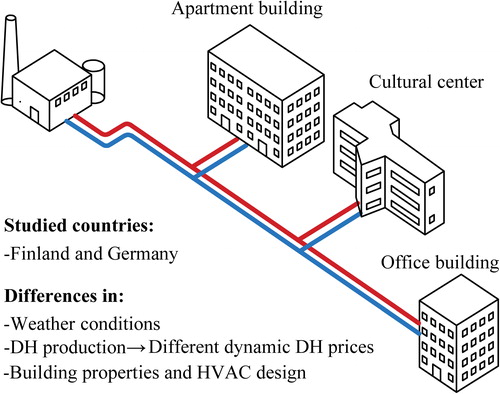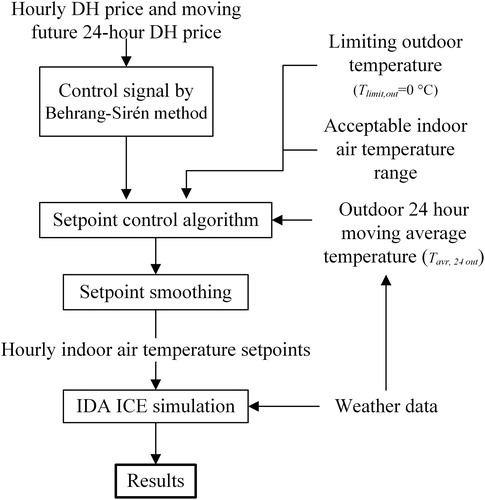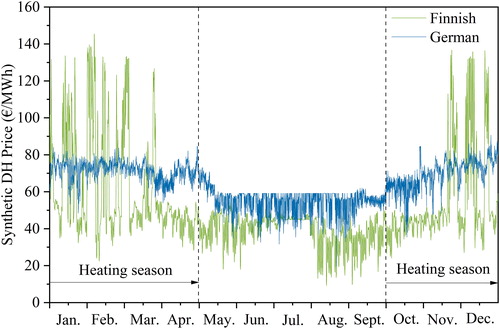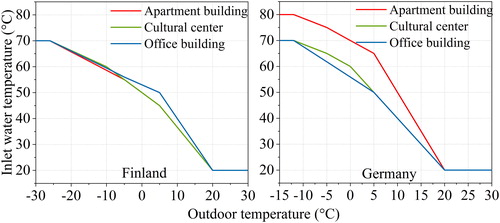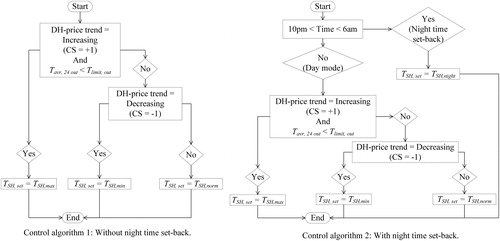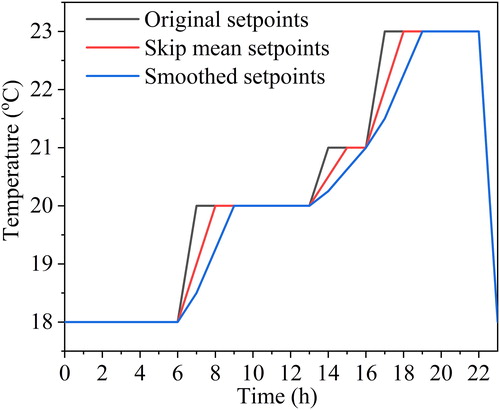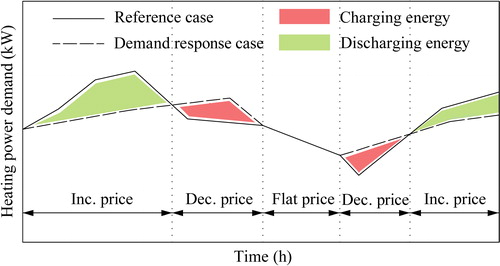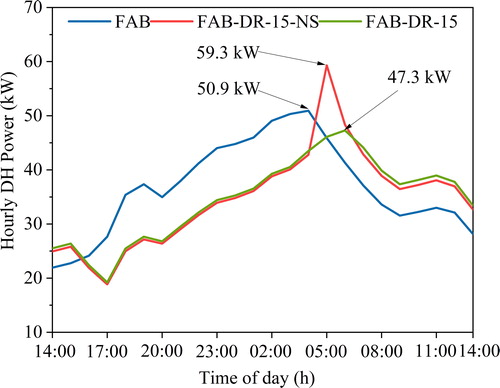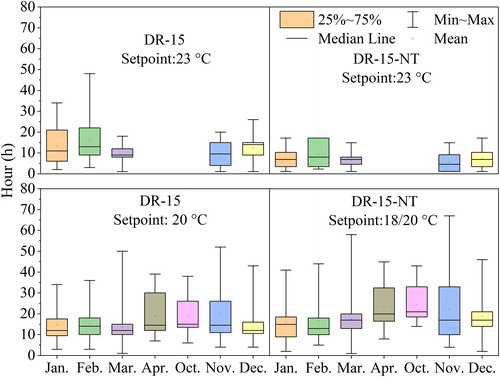Figures & data
Table 1. Description of the Finnish synthetic DH price.
Table 2. Description of the German synthetic DH price.
Table 3. Description of Helsinki and Hamburg outdoor temperatures of test reference years.
Table 4. Building model parameters.
Table 5. U values and airtightness of buildings.
Table 6. Design powers of space heating systems.
Table 7. Ventilation systems for simulated buildings.
Table 8. Usage time and annual internal heat gains.
Table 9. Simulation cases for different building types.
Table 10. Number of total set-point variation hours in Finnish and German cases for each month during the heating season.
Table 11. Number of total set-point variation periods per month in Finnish and German cases during the heating season.
Fig. 10. Variations of charging/discharging energies during a single charging/discharging period in the Finnish apartment building (FAB), cultural center (FCC), and office building (FOB) with marginal values of 15 €/MWh and 75 €/MWh.
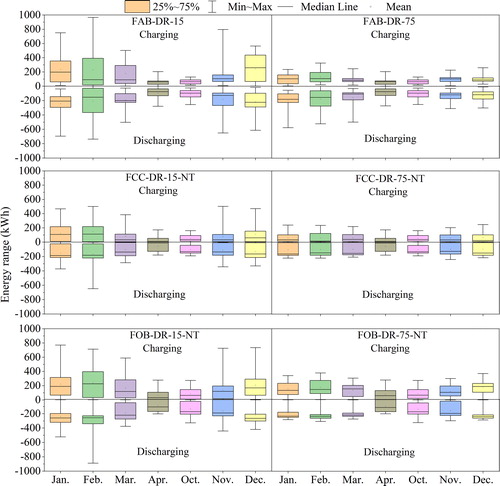
Table 12. Total specific charging and discharging energies of the Finnish cases per heated net floor area.
Fig. 11. Variations of charging/discharging energies during a single charging/discharging period in the German apartment building (GAB), cultural center (GCC), and office building (GOB) with marginal values of 15 €/MWh and 75 €/MWh.
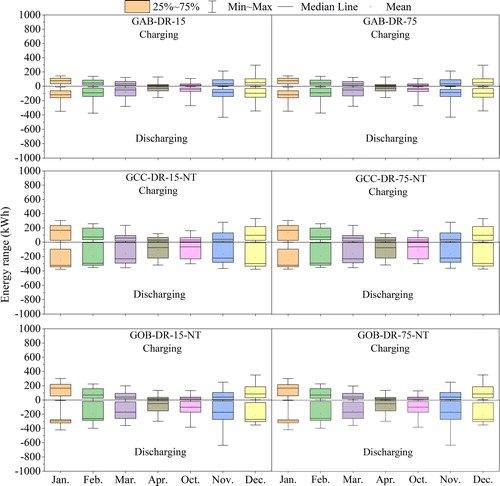
Table 13. Total specific charging and discharging energies of the German cases per heated net floor area.
Fig. 12. Power flexibility factors P+ and P− of the Finnish office building without and with nighttime set-back.
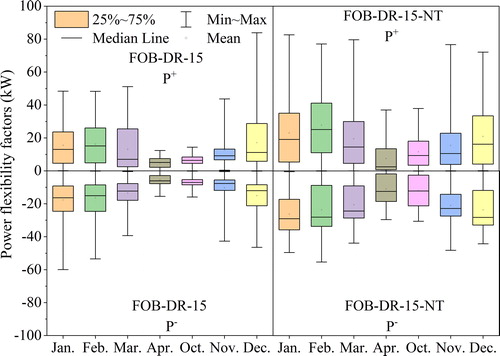
Fig. 13. Hourly heating power demand with (red line) and without (blue line) nighttime set-back in the Finnish office building.
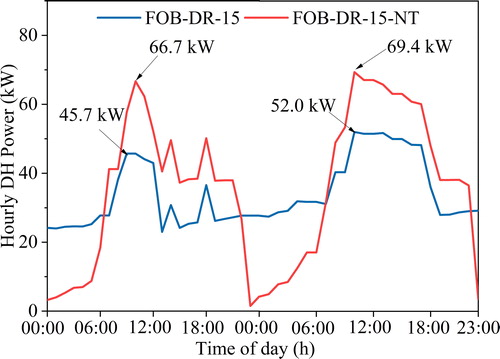
Table 14. Flexibility factors and average indoor temperature of Finnish and German cases.

